serves 4
For the Daal
-
Neutral oil (such as sunflower, vegetable, groundnut, or just olive oil)
-
300g yellow split peas
-
1 onion
-
5 garlic cloves
-
30g ginger
-
8 cardamom pods
-
2 tsp cumin seeds
-
1 tsp coriander seeds
-
1/2 tsp black peppercorns
-
1/2 tsp garam masala
-
1/2 tsp chilli powder
-
1/4 tsp cinnamon
-
1/4 tsp turmeric
-
1 tin plum tomatoes
-
400 ml oat milk
For the Cauliflower
-
2/3 tsp coriander seeds (or 1/2 tsp ground coriander)
-
2/3 tsp cumin seeds (or 1/2 tsp ground cumin)
-
1/4 tsp turmeric
-
Pinch of black pepper
-
50 ml neutral tasting oil (vegetable, sunflower)
-
1 leafy cauliflower
-
8 garlic cloves
-
1 pomegranate
-
25g golden granulated sugar (1 tbsp)
-
1 lemon
-
1 tbsp flaked almonds, toasted
-
15g coriander, finely chopped
Method
Start with the daal up to 48 hours before and refrigerate until you need it.
The evening before, soak the peas in plenty of water (roughly 3x the volume of the peas). The next day, drain and rinse the peas, transfer to a saucepan and cover with 1.5x water and 1/2 tsp salt. Bring to a simmer and cook until soft (around 1 hour).
Dice the onion, finely crush the garlic and julienne the ginger. Heat some neutral oil in a casserole and add the onions to sweat gently until translucent (around 10 minutes), then add the garlic and ginger and continue cooking until fragrant.
In the meantime, remove the cardamom seeds from their pods and toast them along with the cumin seeds, coriander seeds and peppercorns until fragrant (30-60 seconds). Then use a pestle & mortar or a spice grinder to work them into a fine powder. Add the freshly ground spices to the pan along with the cinnamon, turmeric, garam masala and chilli powder as well as 1/2 tsp salt and cook for about 30 seconds, just to wake up the flavours.
Tip in the plum tomatoes, breaking them up with a spoon as you go, followed by the oat milk and half of the softened peas including their cooking liquid. Cook covered for 1 hour, then take off the lid and keep cooking until the lentils begin to disintegrate and thicken (another 30 minutes). Stir through the remaining peas including their cooking liquid and turn off the heat. Your daal is ready.
For the cauliflower, preheat the oven to 200°C along with a large cast iron pan or oven dish.
Toast the coriander and cumin seeds and grind them into a powder with a pestle & mortar or spice grinder. If you are using ground spices, simply skip this step. Add the turmeric, 1/2 tsp salt and the black pepper, then combine with the neutral oil.
Cut the cauliflower into half right through the middle, brush the flat side with oil, sprinkle over some salt and place cut side down directly onto the hot pan or oven dish. Then drizzle half the spiced oil over the cauliflower halves and roast for 15-30 minutes, depending on the size of your cauliflower. Trim off the ends of the garlic cloves. That way you can squeeze out the soft cloves after roasting them. Add them to the pan and drizzle the remaining oil over the cauliflower halves. Then roast for another 20 minutes.
While the cauliflower is roasting, cut the pomegranate in half and deseed it by whacking a spoon on the back. Set 2 tbsp of the seeds aside and juice the rest by squeezing the seeds with your hands above a fine sieve. Pour the juice into a saucepan, bring to a light simmer and add the sugar. Cook until reduced and slightly thickened, then add the juice of half the lemon.
When the cauliflower is gnarly and golden brown, but not soft all the way through, remove it from the oven. Set the halves aside and squeeze the garlic cloves out of their skins into the pan. Pour in the daal, then return the cauliflower halves. Drizzle over the pomegranate sauce and sprinkle over some flaked almonds and chopped coriander.

Indian-Inspired Christmas Cauliflower
Ingredients
For the Daal
- Neutral oil (such as sunflower, vegetable, groundnut, or just olive oil)
- 300 g yellow split peas
- 1 onion
- 5 garlic cloves
- 30 g ginger
- 8 cardamom pods
- 2 tsp cumin seeds
- 1 tsp coriander seeds
- 1/2 tsp black peppercorns
- 1/2 tsp garam masala
- 1/2 tsp chilli powder
- 1/4 tsp cinnamon
- 1/4 tsp turmeric
- 1 tin plum tomatoes
- 400 ml oat milk
For the Cauliflower
- 2/3 tsp coriander seeds (or 1/2 tsp ground coriander)
- 2/3 tsp cumin seeds (or 1/2 tsp ground cumin)
- 1/4 tsp turmeric
- Pinch of black pepper
- 50 ml neutral tasting oil (vegetable, sunflower)
- 1 leafy cauliflower
- 8 garlic cloves
- 1 pomegranate
- 25 g golden granulated sugar (1 tbsp)
- 1 lemon
- 1 tbsp tbsp flaked almonds, toasted
- 15 g coriander, finely chopped
Instructions
- Start with the daal up to 48 hours before and refrigerate until you need it.
- The evening before, soak the peas in plenty of water (roughly 3x the volume of the peas). The next day, drain and rinse the peas, transfer to a saucepan and cover with 1.5x water and 1/2 tsp salt. Bring to a simmer and cook until soft (around 1 hour).
- Dice the onion, finely crush the garlic and julienne the ginger. Heat some neutral oil in a casserole and add the onions to sweat gently until translucent (around 10 minutes), then add the garlic and ginger and continue cooking until fragrant.
- In the meantime, remove the cardamom seeds from their pods and toast them along with the cumin seeds, coriander seeds seeds and peppercorns until fragrant (30-60 seconds). Then use a pestle & mortar or a spice grinder to work them into a fine powder. Add the freshly ground spices to the pan along with the cinnamon, turmeric, garam masala and chilli powder as well as 1/2 tsp salt and cook for about 30 seconds, just to wake up the flavours.
- Tip in the plum tomatoes, breaking them up with a spoon as you go, followed by the oat milk and half of the softened peas including their cooking liquid. Cook covered for 1 hour, then take off the lid and keep cooking until the lentils begin to disintegrate and thicken (another 30 minutes). Stir through the remaining peas including their cooking liquid and turn off the heat. Your daal is ready.
- For the cauliflower, pre-heat the oven to 200°C along with a large cast iron pan or oven dish.
- Toast the coriander and cumin seeds and grind them into a powder with a pestle & mortar or spice grinder. If you are using ground spices, simply skip this step. Add the turmeric, 1/2 tsp salt and the black pepper, then combine with the neutral oil.
- Cut the cauliflower into half right through the middle, brush the flat side with oil, sprinkle over some salt and place cut side down directly onto the hot pan or oven dish. Then drizzle half the spiced oil over the cauliflower halves and roast for 15-30 minutes, depending on the size of your cauliflower. Trim off the ends of the garlic cloves. That way you can squeeze out the soft cloves after roasting them. Add them to the pan and drizzle the remaining oil over the cauliflower halves. Then roast for another 20 minutes.
- While the cauliflower is roasting, cut the pomegranate in half and deseed it by whacking a spoon on the back. Set 2 tbsp of the seeds aside and juice the rest by squeezing the seeds with your hands above a fine sieve. Pour the juice into a saucepan, bring to a light simmer and add the sugar. Cook until reduced and slightly thickened, then add the juice of half the lemon.
- When the cauliflower is gnarly and golden brown, but not soft all the way through, remove it from the oven. Set the halves aside and squeeze the garlic cloves out of their skins into the pan. Pour in the daal, then return the cauliflower halves. Drizzle over the pomegranate sauce and sprinkle over some flaked almonds and chopped coriander.
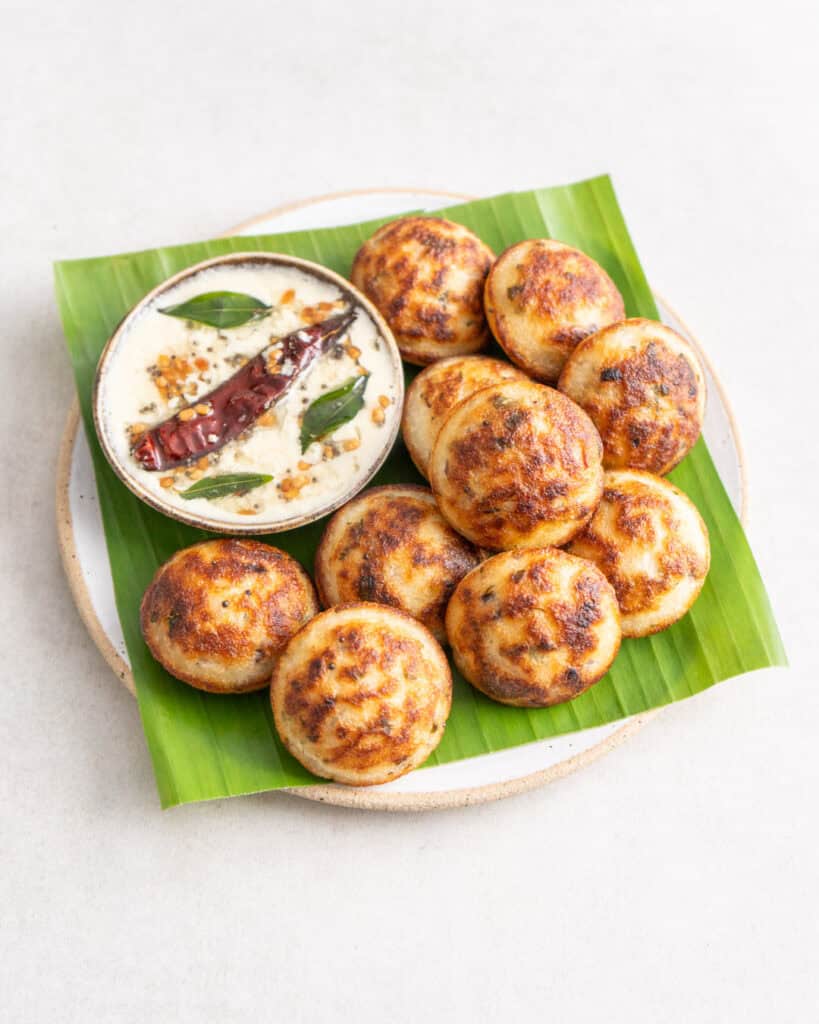

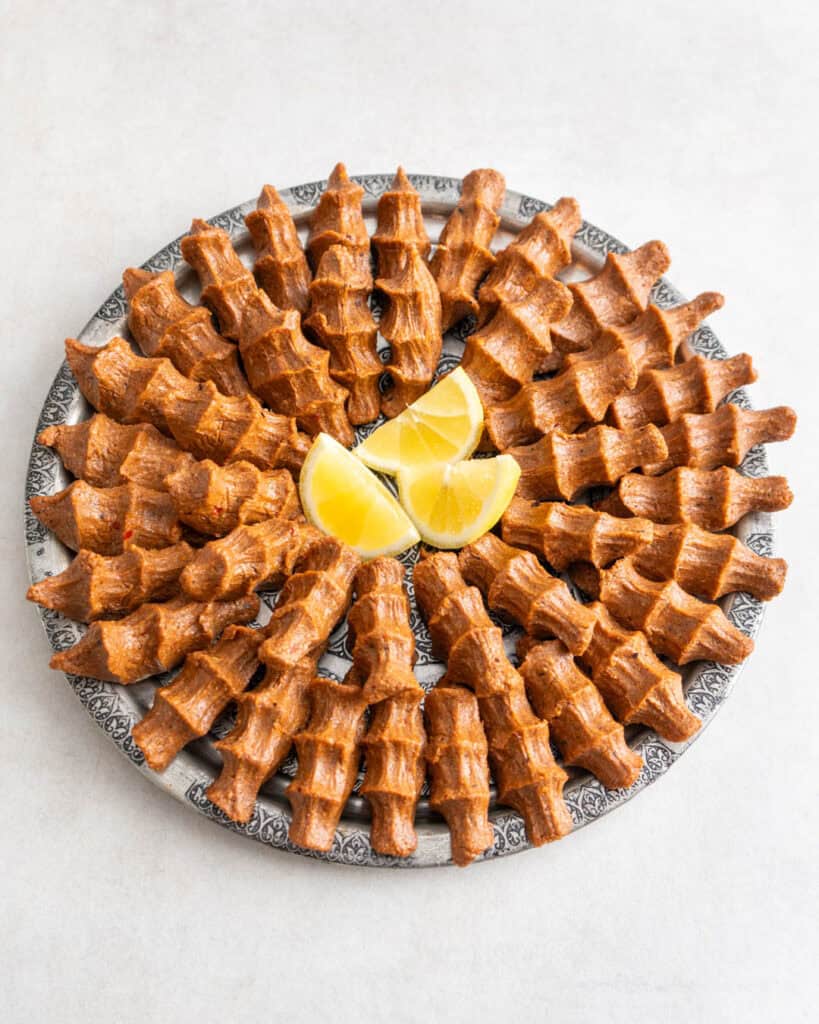
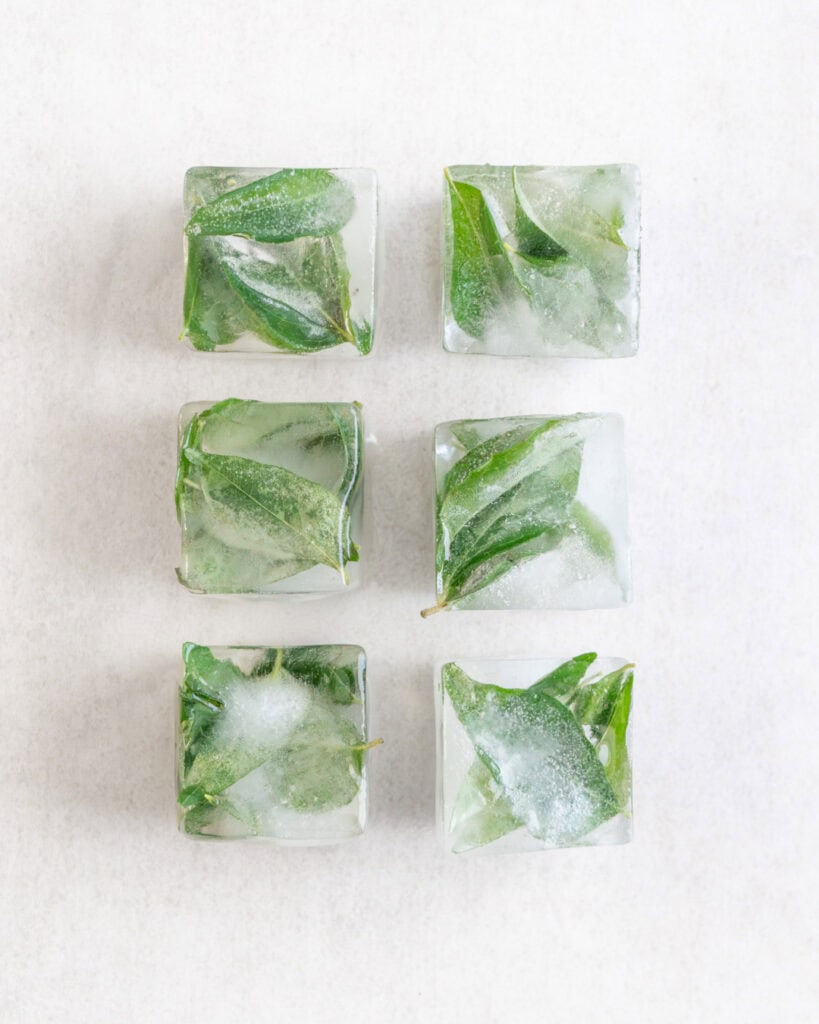
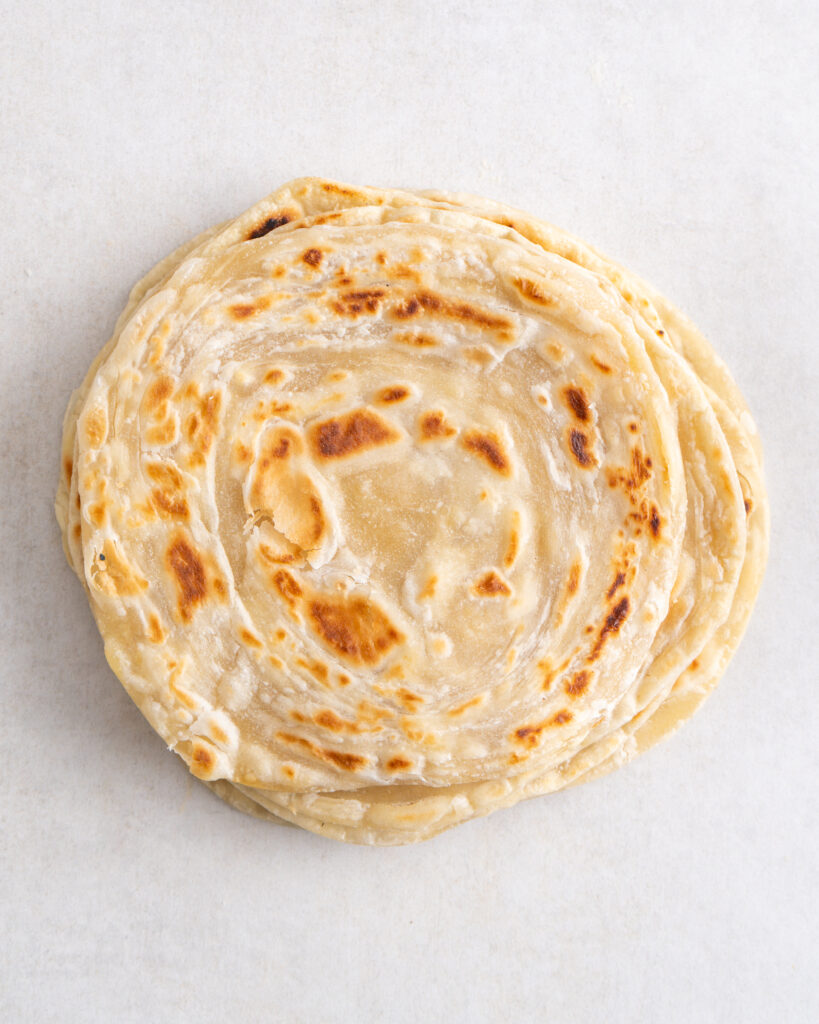
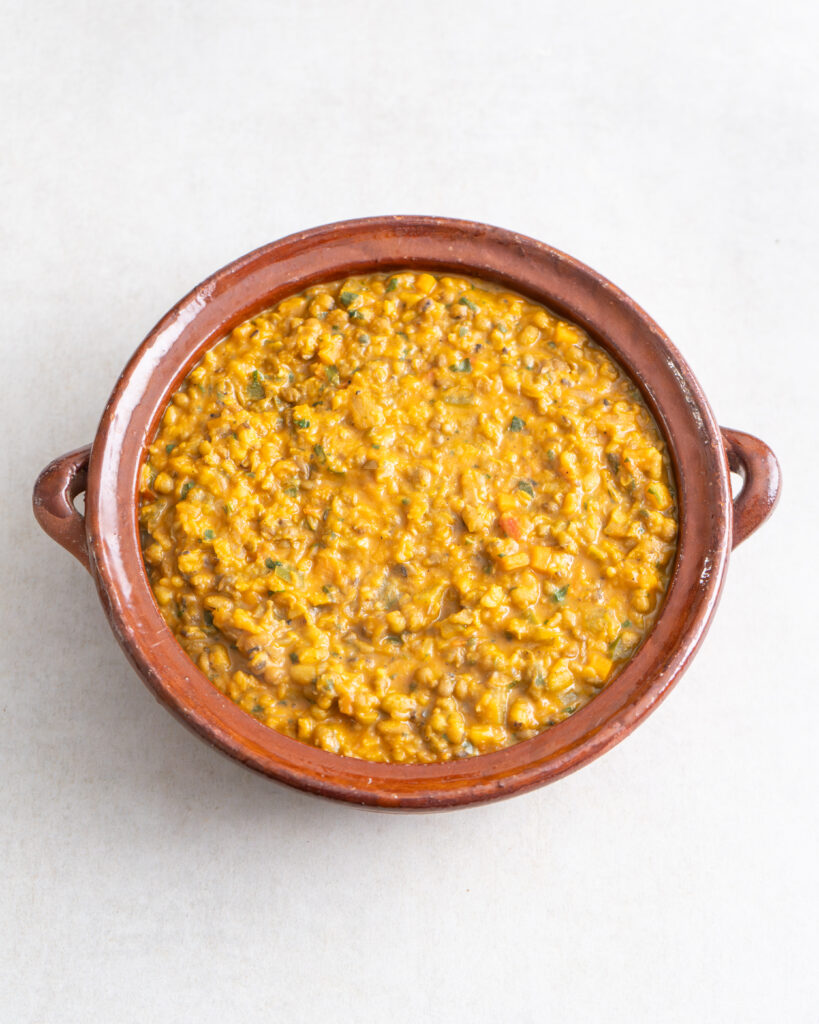
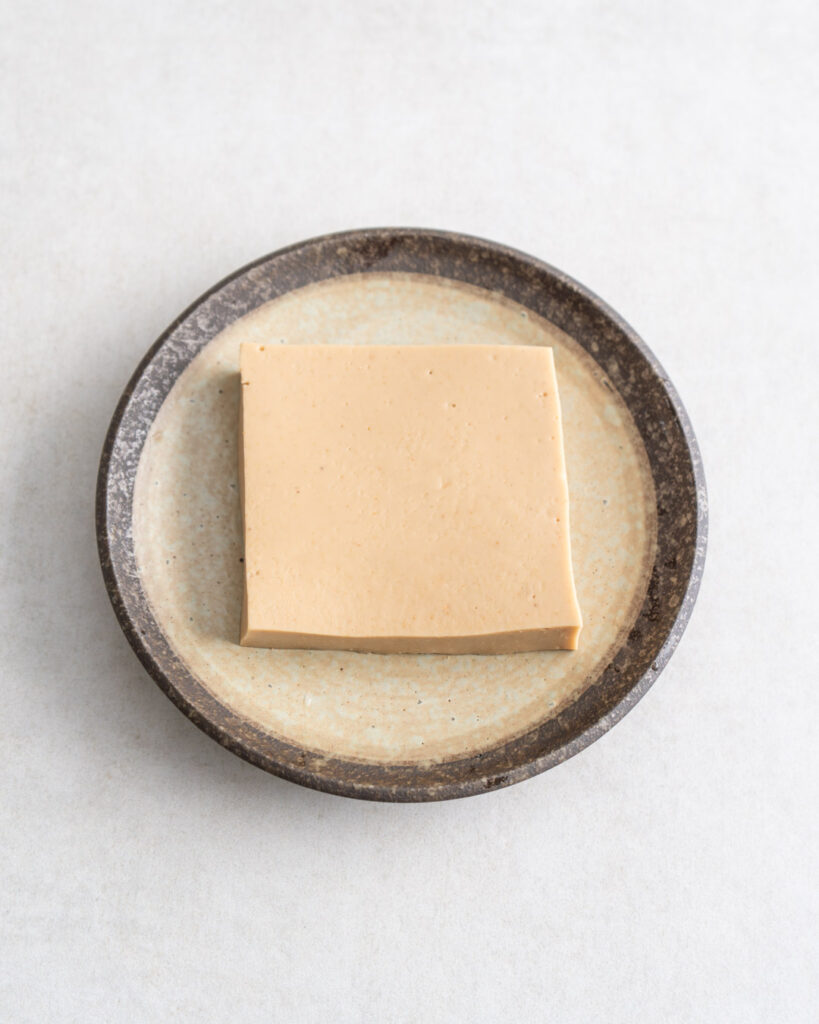
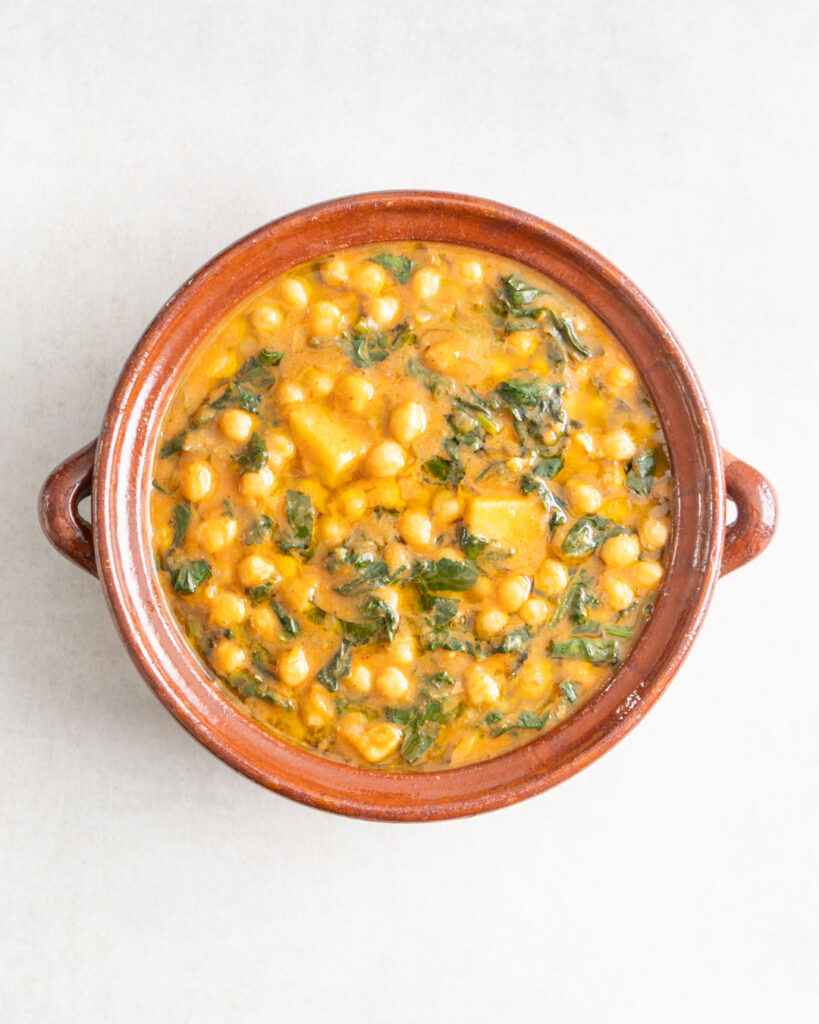
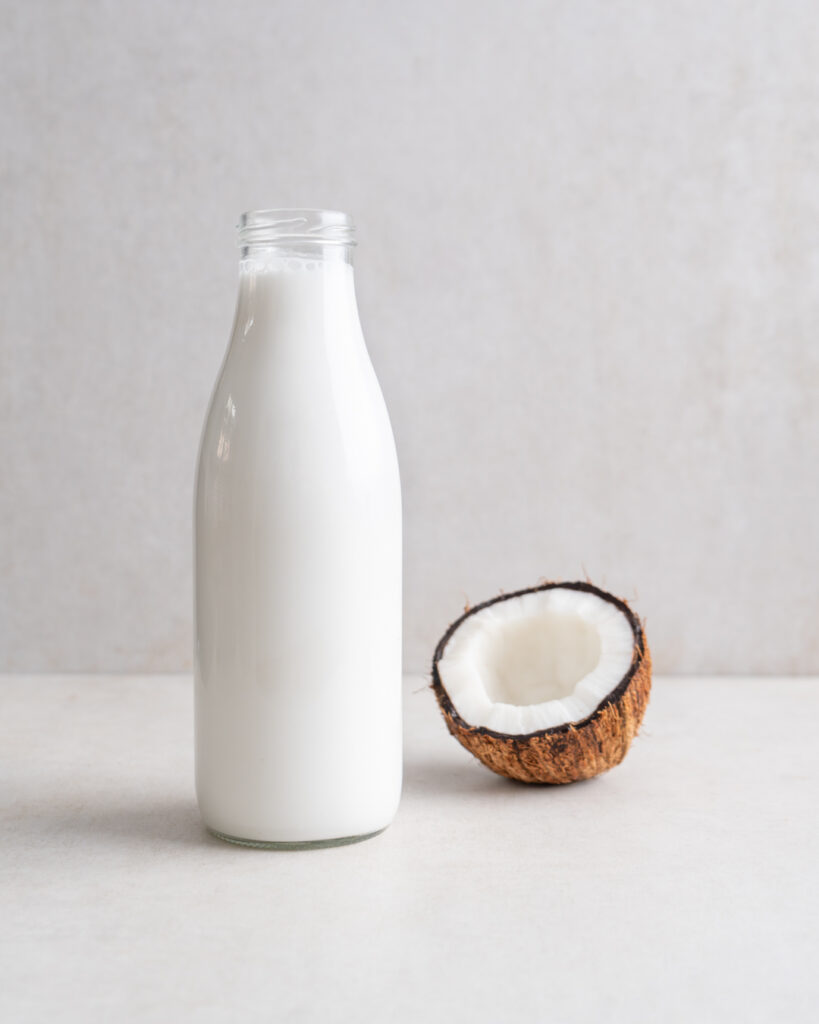
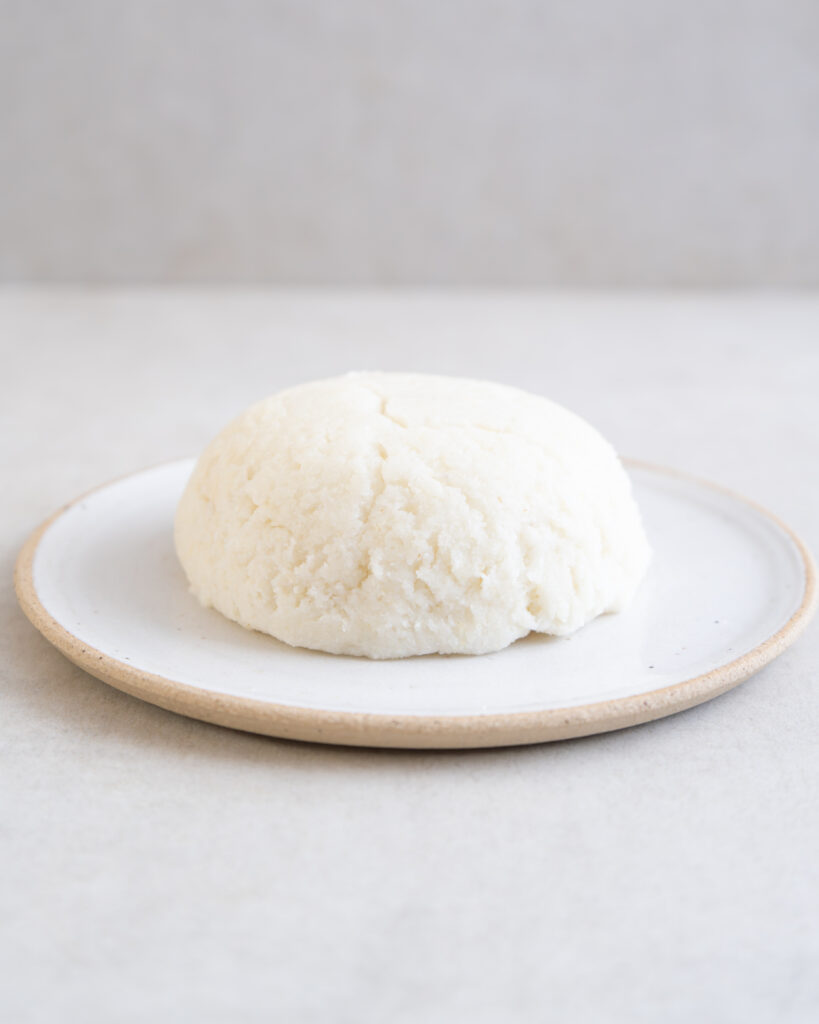

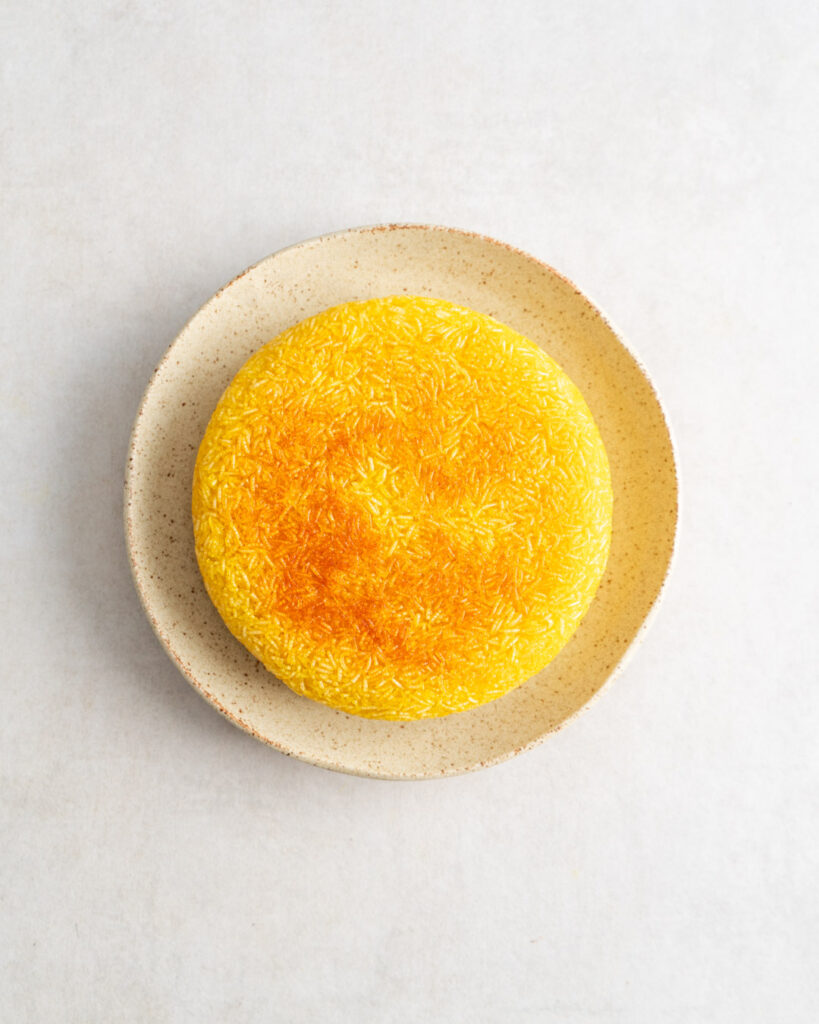


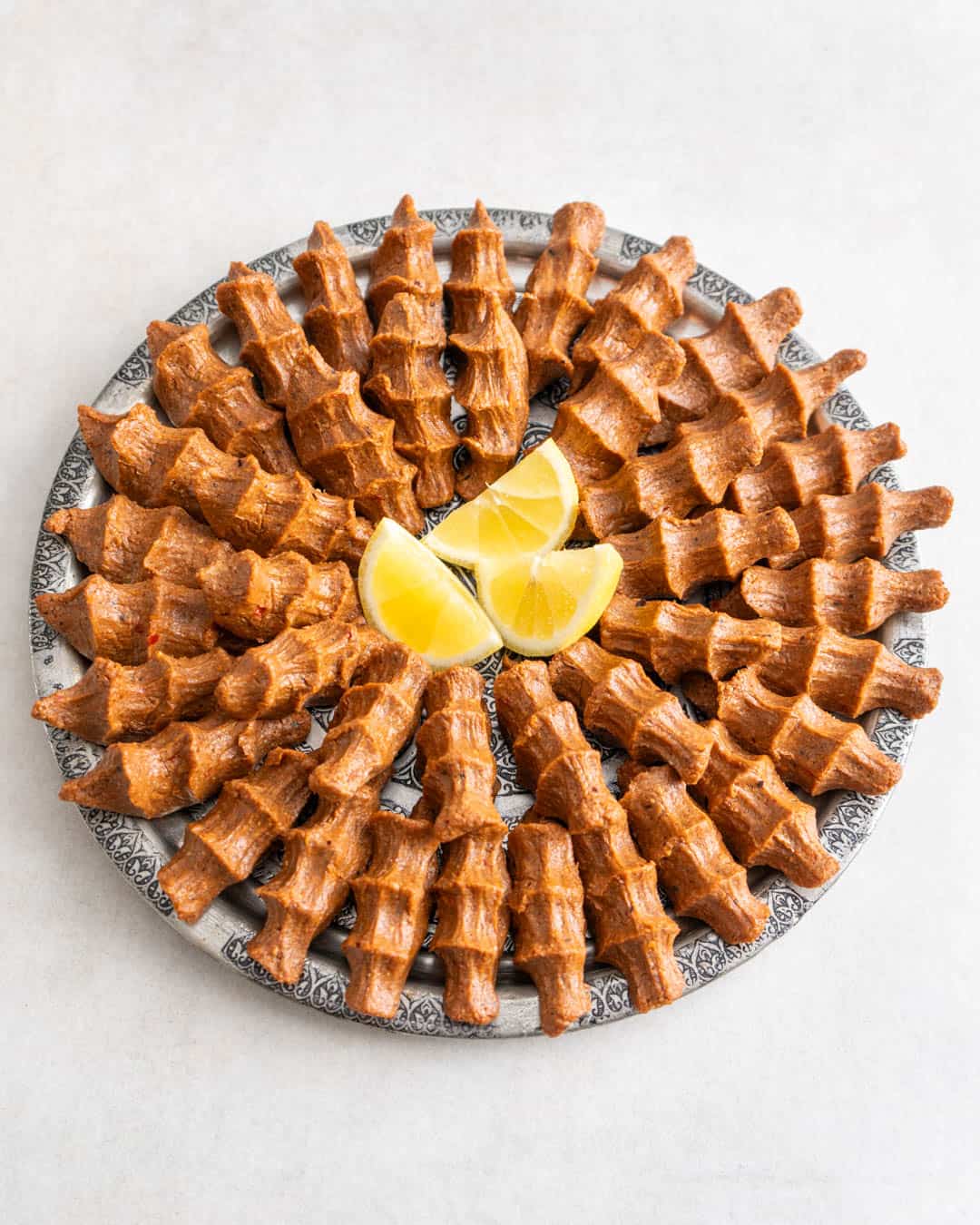
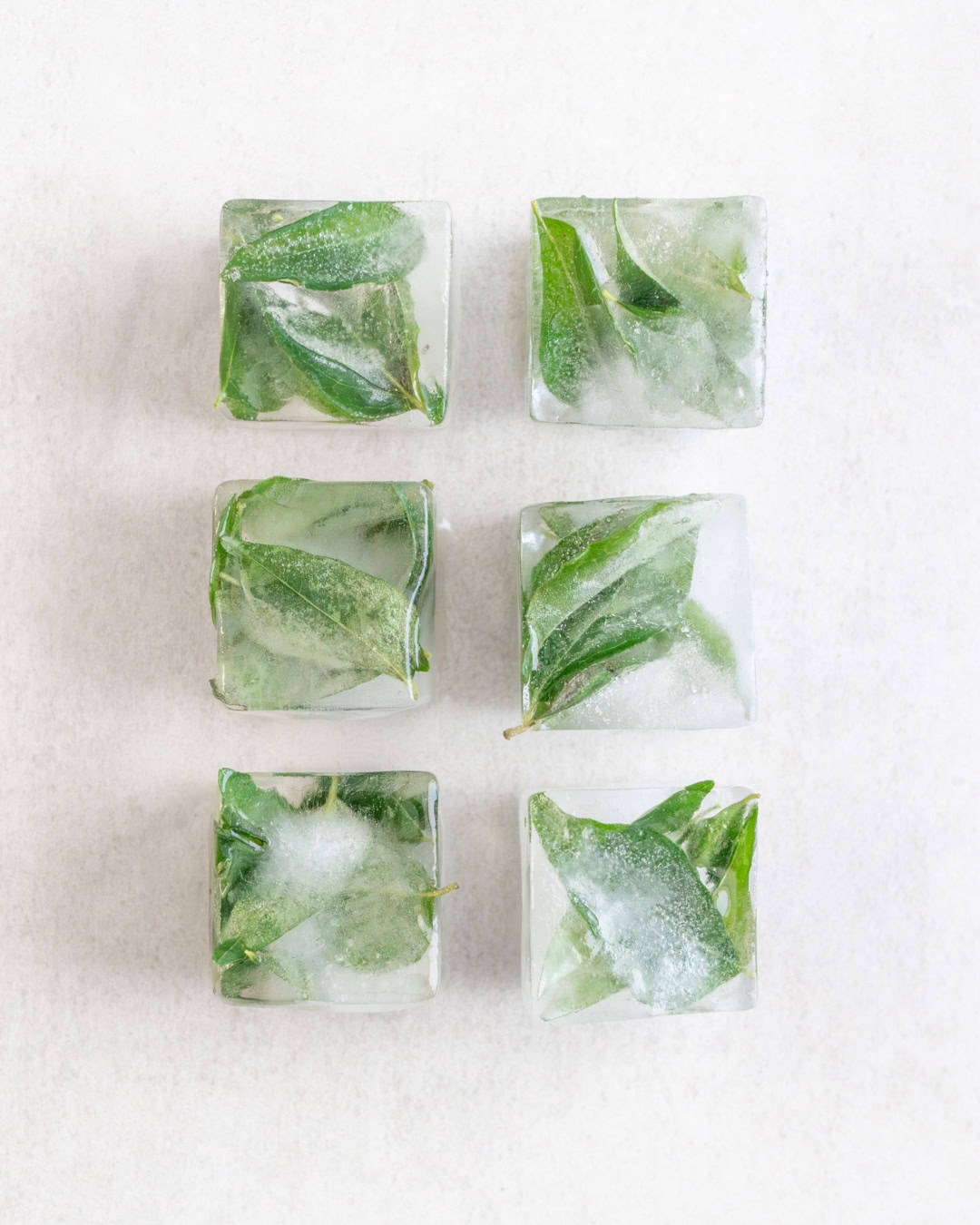








0 Comments